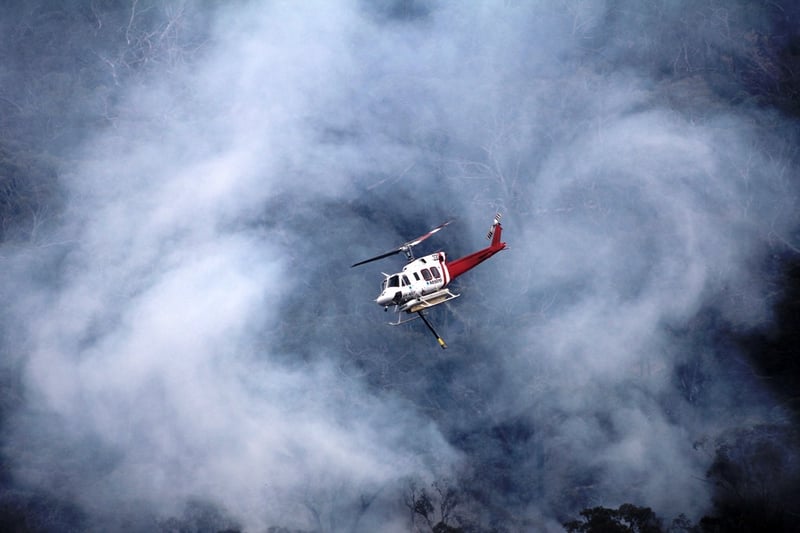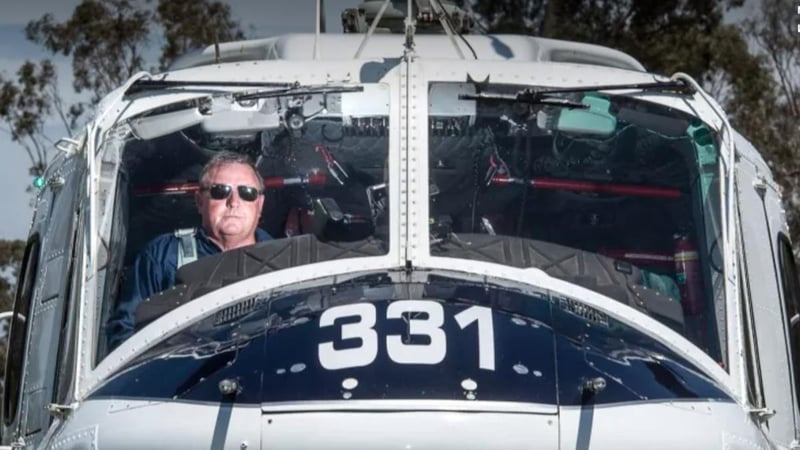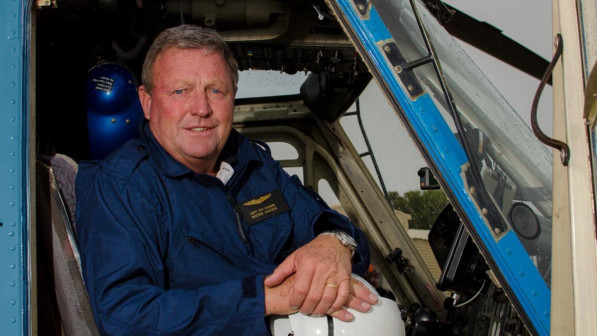While Ray was completing his instructor’s rating, he was disappointed to learn that most Australians were travelling to the United States to gain their pilot licenses. For most firms, pilot training was a sideline to charter work.
Ray took it upon himself to offer these Australian pilots a better service, and he opened Kestrel in 1985, offering first-class training to up-and-coming pilots across Australia. Business boomed.
Ray moved Kestrel from Melbourne to Mangalore, needing an airport that had no curfews so they could run day and night programmes to keep up with demand.
Ray Cronin is now one of Australia’s most experienced helicopter pilots and instructors. With over 42 years in the skies, he’s logged more than 10,000 flying hours. He holds the record of being the countries longest continuous serving helicopter Chief Pilots and helicopter Chief Flying Instructors in Australia.
For Ray, it’s always been about creating opportunities. Chances to fly didn’t come easy for a boy from Tasmania, so Ray’s mission is to now create positions for aviation enthusiasts like himself.

The changing climate
Ray’s career has been extensive and progressive, but he’s always been a firm believer in not sticking your finger into too many pies.
When Ray does something, he puts his best foot forward.
Kestrel had purchased their first BK 117, which extended their capabilities to firefighting. From here, the business began to evolve.
“We had the equipment, and we were asked to provide a firefighting service — so we did. And this developed.”
The demands grew greater from agencies each and every year, and Ray knew they’d identified another growth area. Ray expanded his fleet with Bell 212’s and 412’s, and is now one of the largest privately-owned helicopter companies in the state.
What was initially a sideline to pilot training, has grown into a full-time focus and preoccupation for Ray and his team, who work hard to ensure Australian communities and wildlife are safe as the threat of wildfires soars.
This year, Kestrel Aviation became the first Australian owned helicopter company to obtain night firebombing trials approval in cooperation with CASA which moved to live fire in March in conjunction with Emergency Management Victoria and the Country Fire Authority. The successful outcome of these trials has now reached full maturity with Kestrel holding an unrestricted night firebombing approval from CASA.
Ray and his team at Kestrel Aviation are now preparing to launch their night vision firefighting capability, paving the way for firefighting after dark in Australia for the first time.
Victoria is one of the most bushfire prone areas in the world. Nighttime aerial firebombing has the potential to improve the ability of Victoria and other states to fight fires, affording better protection for bushfire-prone communities.
Kestrel is combining its industry-leading helicopter pilot skills with innovative technology to drop water and suppressants on fires in all conditions at night. These low level, nighttime deployments of water from Kestrel’s advanced helicopter belly tank are the first to deliver with considerable accuracy in Australia. A capability that is increasingly vital in these relentless wildfire seasons.
“There’s not a lot of room other than getting bigger. The wildfire seasons have grown significantly. We’ve gone from a 3 to a 7 month season. Our patterns are showing this.”
If fire patterns continue on the same trajectory, the issue will be having enough aircraft and big enough aircraft to make a difference. Leading the way, Ray is encouraging all Australian aerial firefighters to look at increasing their capabilities.
“We need to ensure the agencies are supported — so if it season did come early or ran late, that the community could be sure the capability is there in case of an emergency.”
Due to the increased wildfire season, aerial Firefighting requires a more calculated approach.
As Ray explains, it’s come a long way from “spray a bucket on what was burning.”
“It has gone from hit and miss to very accurate delivery systems where information is electronically fed to command centres. It’s live and constant. We’ve got great intelligence going back to command centres now. They know where you’re going, or how fast you’re going. They don’t have to ask you what it looks like as the technology is there to communicate this.”

Ray is drawn to Aerial Fire Fighting due to the magnificent reward it offers.
“You can directly see the impact of your work. When fighting fires you have instant feedback. You can see the results of your work, and you know the people on the ground are grateful that you’re there.”
AFF is as exciting as it is important.
“Once you hear your buzzer, you’re off. The adrenaline hits and the job is on.”
Ray has an extensive career, yet goes about his days as modest as any.
As for his most treasured moments throughout his career, it seems his whole life has been an exciting expedition — with many special moments that continue to unfold. With multiple strings to his bow, friendships and a power to do good things, Ray’s world is certainly not mundane.
“It’s like opening a box of photos that hasn’t yet been filed. Every time you pick one up it generates a memory of a great time you’ve had, or places you have been and moments you’ve created. The day you got your license. The day you get your first turbine endorsement. The day you first sent someone solo. All those thrills you get.”
Ray’s focus has always been about the quality of his delivery.
“And at the end of the day, offering quality will hopefully put you in front of everyone else.”
